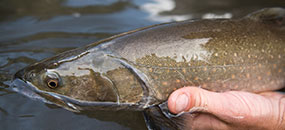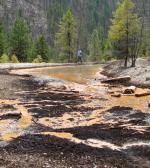Montana Trout Unlimited has requested that the Forest Service withdraw certain public lands in the Smith River corridor from future mineral exploration.
“We are asking the Forest Service to initiate a withdrawal process because many Montanans are concerned that the Smith River watershed is in jeopardy of becoming a host for a large-scale mining district, which given mining’s history in Montana is incompatible with what Montana’s value about this treasured river and its tributaries,” says David Brooks, Montana TU’s associate director for conservation.
Tintina Resources has proposed a copper mine on Sheep Creek, the headwaters of the Smith River and some of the most important spawning habitat in the system. While that proposal itself is contraversial in nature, the threat of the Black Butte mine is only the beginning.
The company is telling the public that the Black Butte mine will have a limited environmental footprint and be in production for only 11-14 years. However, documents the company is providing to potential investors talks up the potential for a large-scale mining district in the Smith River watershed that could last 50 years and spread into country as far away from the Black Butte project as 15 miles. Federal agency documents prove that Tintina has secured more than 10,000 acres in federal mining claims. It has also obtained mineral rights to thousands more acres of private land in the Smith River watershed. None of these rights prohibit high-impact mining activities, such as large open pits.
“It’s clear that Tintina, and perhaps other mining companies, have much bigger plans for the Smith River watershed than they are letting on,” says Brooks.
To join in the effort to protect the Smith, go to smithriverwatch.org and take action.








